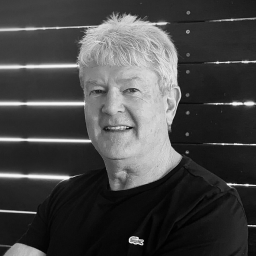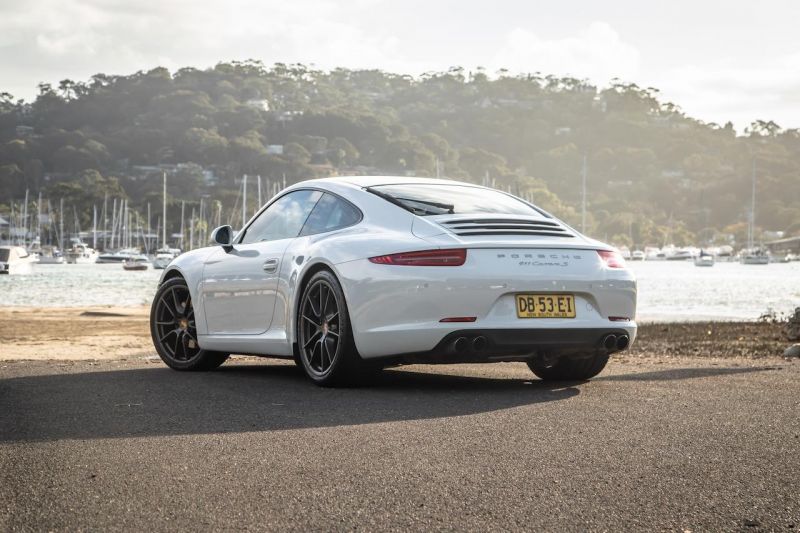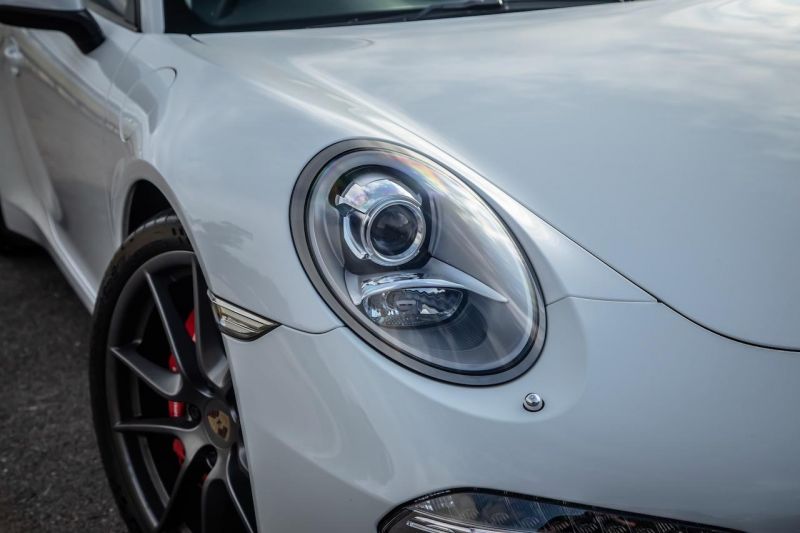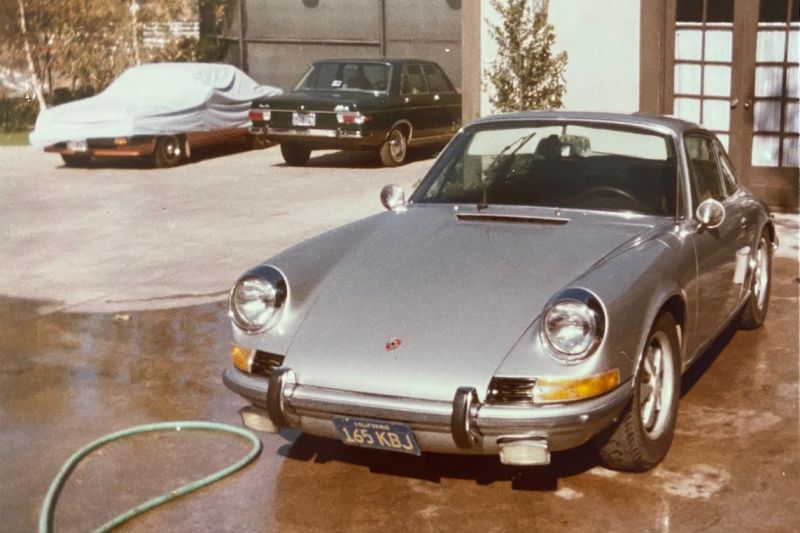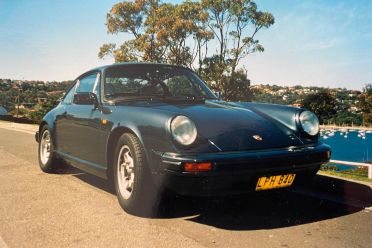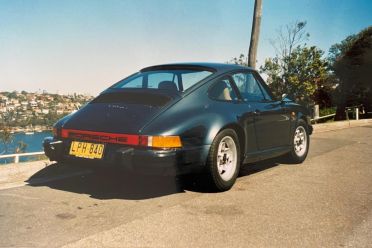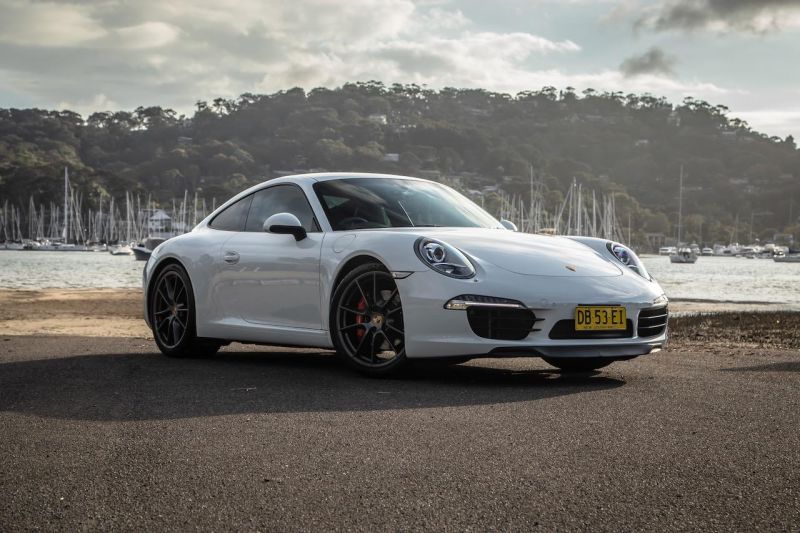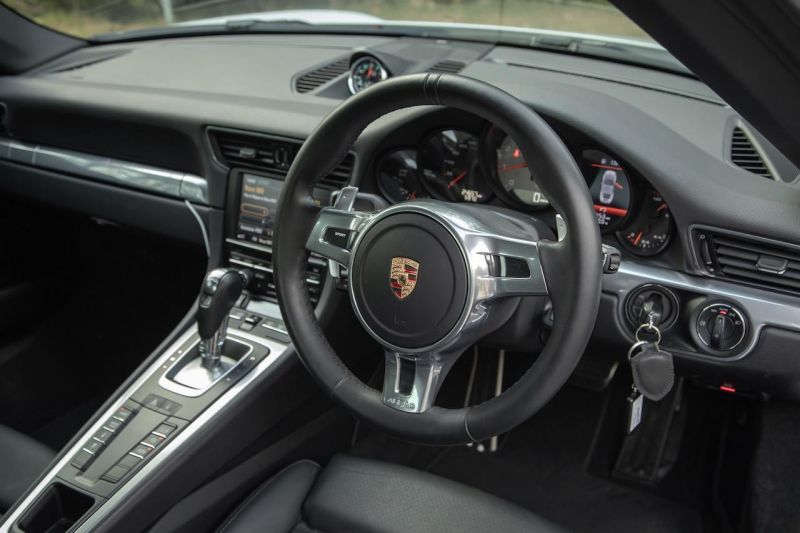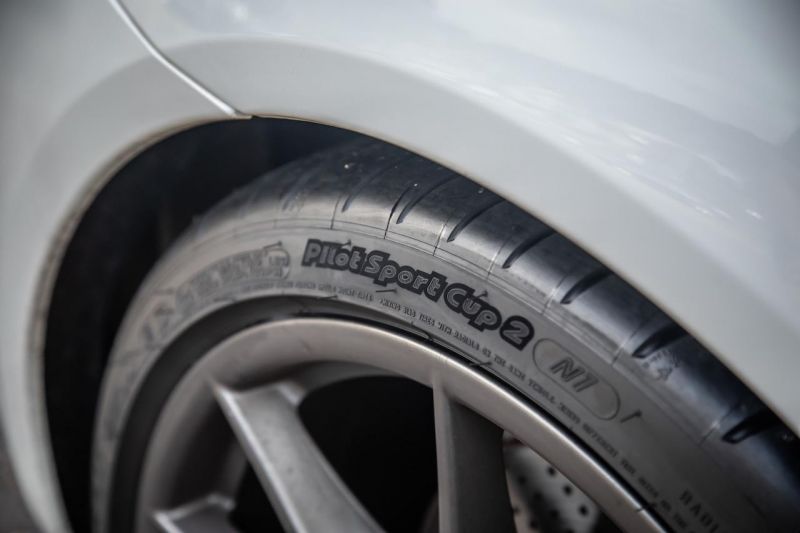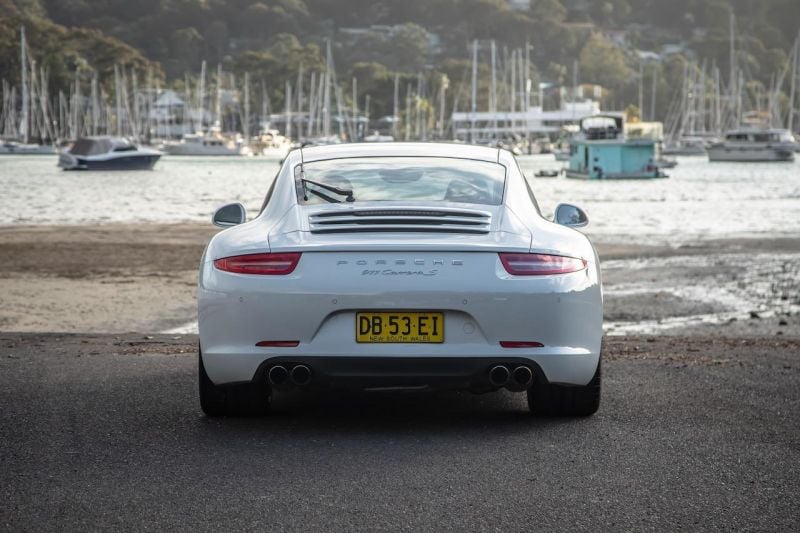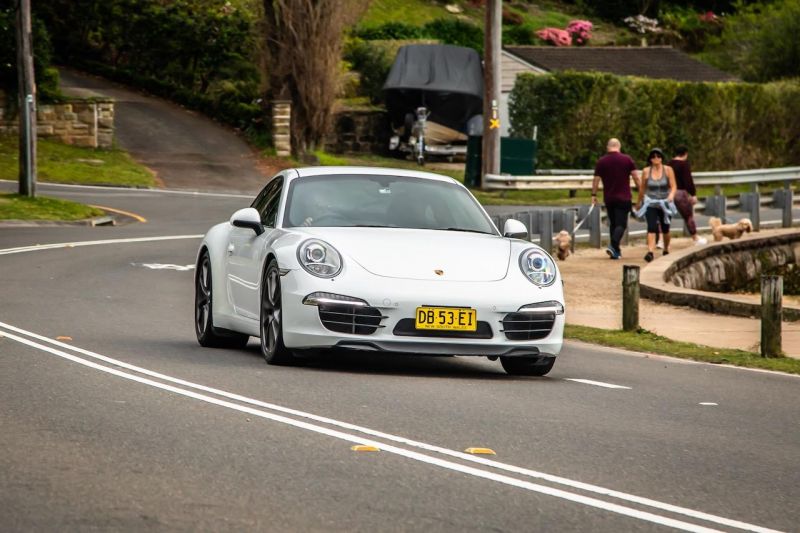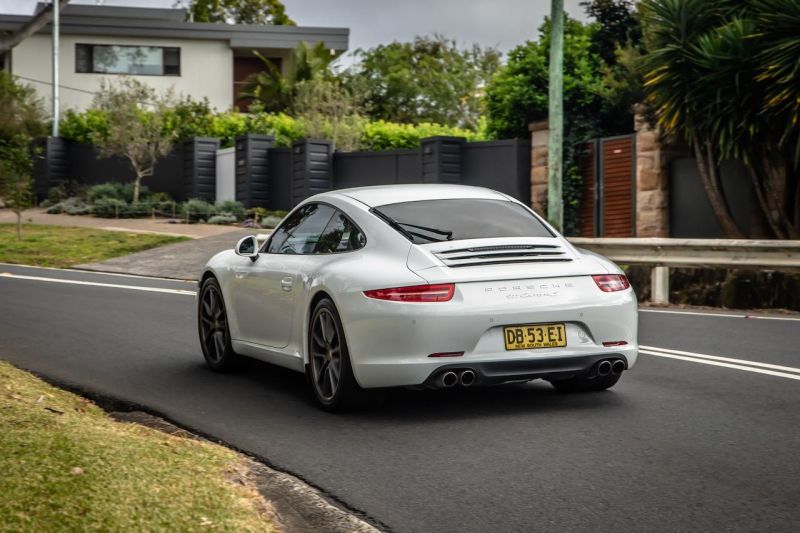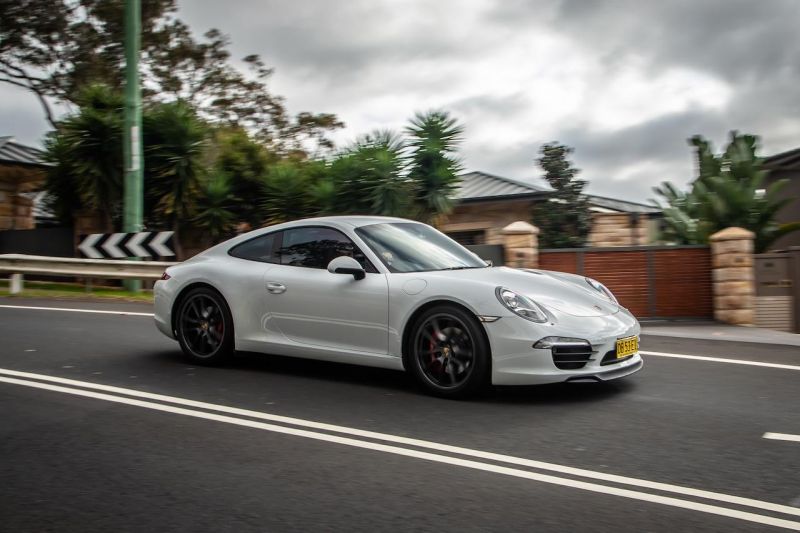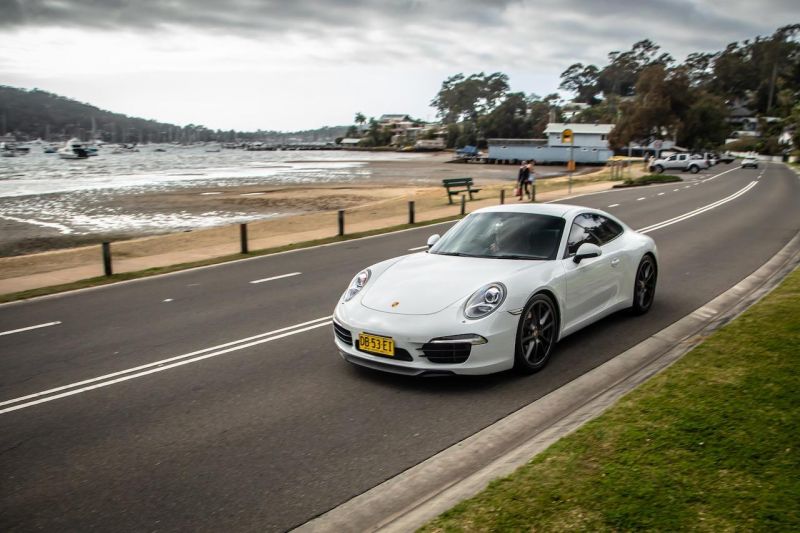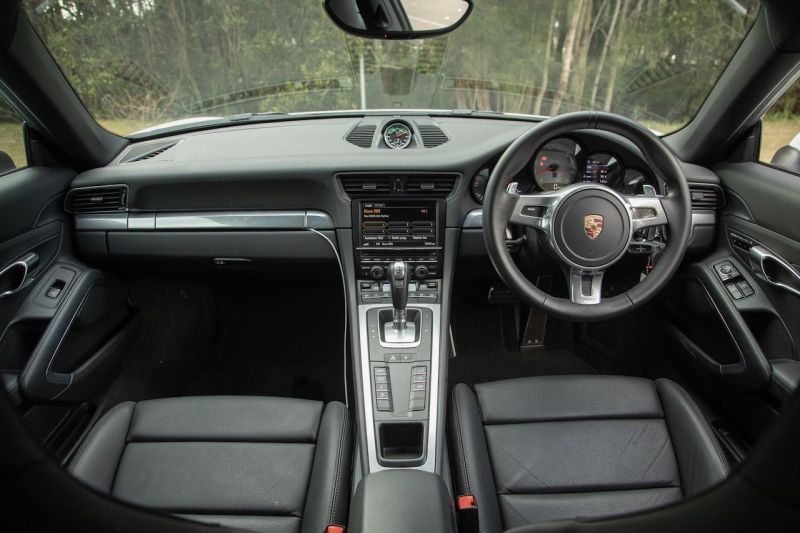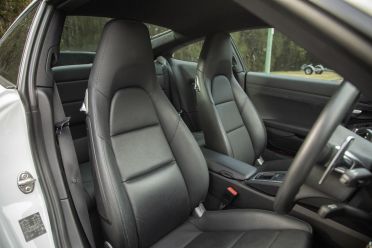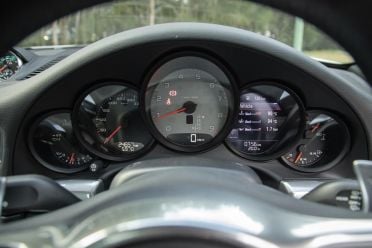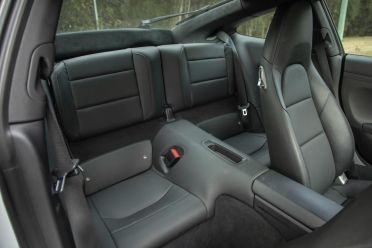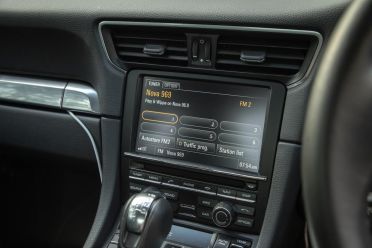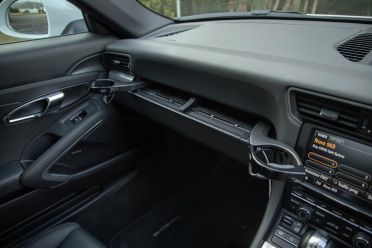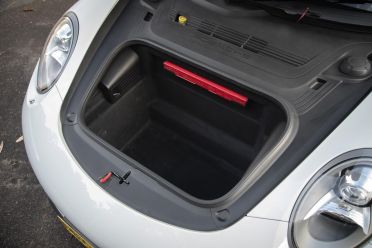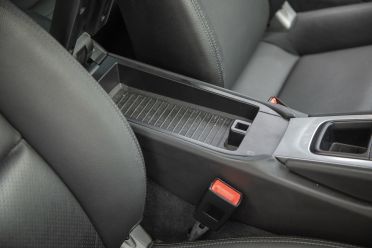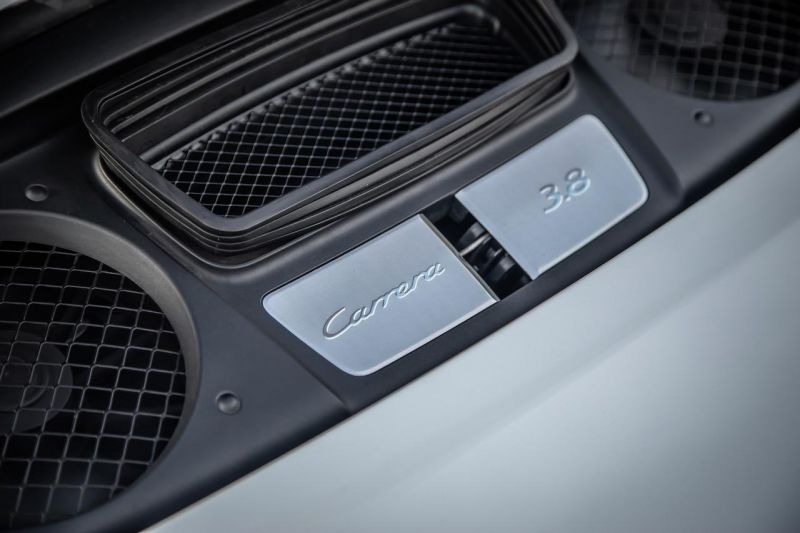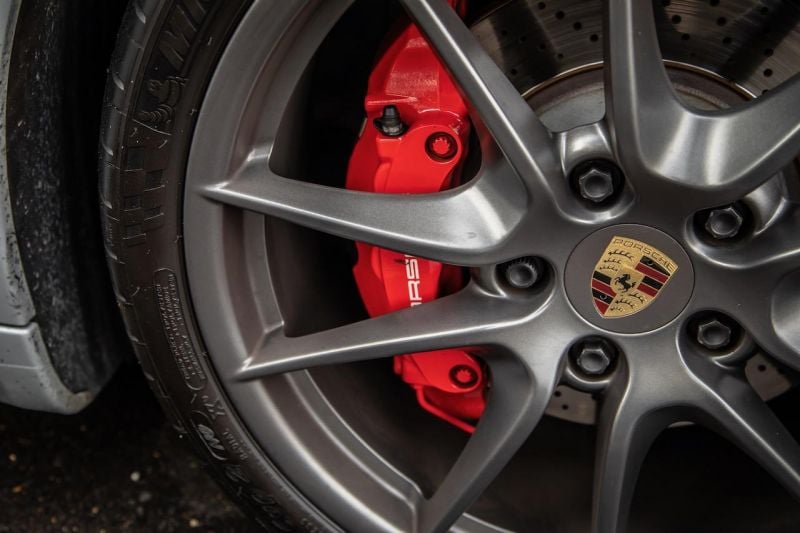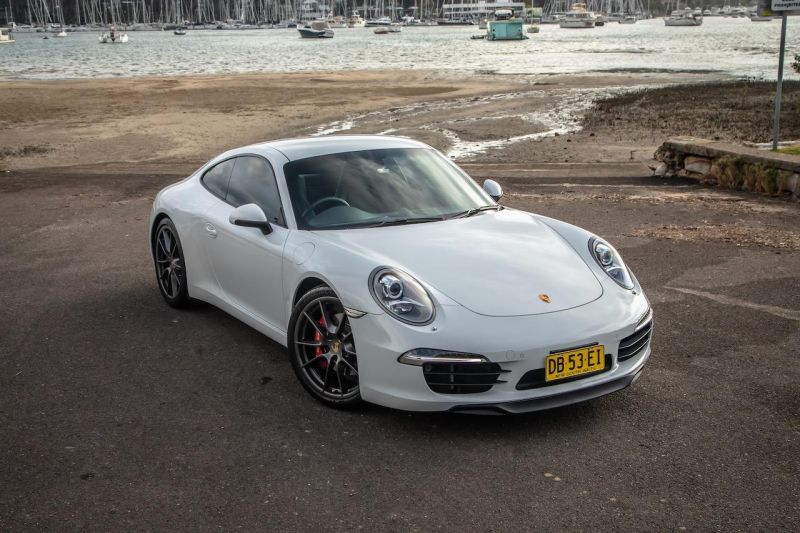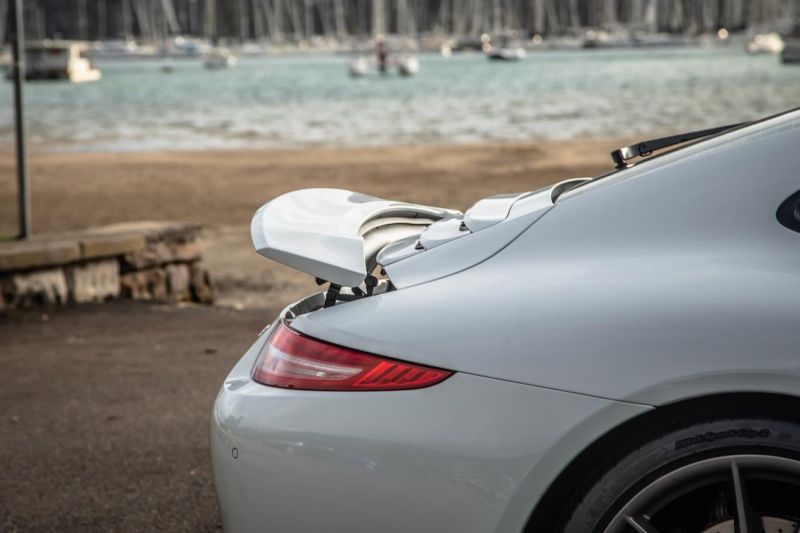It’s not like I had an association with the Porsche brand while growing up, in fact, quite the opposite.
My old man had raced open wheelers and bikes into his mid-twenties and reasonably successfully as the records show, and he had a lifelong passion for fast English road cars – E-Types and V12 Daimlers specifically – so Porsche never really made an impression in my early years.
A fact that was reinforced on more than one occasion, to the tune of, “Listen son, the E-Type Jag is a genuine 150mph sports car and Dave Hay’s 911 is a tortoise by comparison”.
Yep, he’d taken his mate Dave for a spirited ride in his Series 1 ½, 4.2-litre E-Type, who’d he’d said as much while apparently exiting the car white as a ghost.
That was in the late ’70s. Don’t get me wrong, the E-Type was a mind-blowing car and like the Porsche marque, had significant racing heritage behind it in the form of the all-conquering D-Type, but that didn’t mean I wasn’t equally fascinated with the 911.
While I can’t quite pinpoint the exact moment when I became an avid Porsche fan, I think it started from the moment I saw the Steve McQueen driving a 911S through the French countryside in the opening scene of the 1971 racing movie, Le Mans.
It was that unmistakable 911 silhouette devoid of wings and splitters, as well as the rorty exhaust note from its 2.2-litre flat-six, as he rowed through the gears. I was sold even before I watched the rest of the film at the local drive-in with its massive screen and dreadful mono-track audio – but that was enough to fuel a lifelong passion for the Porsche brand.
The awesome Porsche 917 had previously dominated Le Mans in 1970, with a P1 and P2 finish ahead of Ferrari’s 512S, but all-in-all, Porsche cars including the 911 S and 911 T had filled 12 of the top 16 places that year. That’s proper racing legacy right there, and it rubbed off on the road cars back then because they were racing too, in almost street guise with GT packages in the case of the 914/6 GT that came home in P6 after 287 laps of the famous circuit.
The next chapter as a Porsche journeyman was far more engaging, but no less memorable than watching McQueen on the box. As life would have it, I ended up on a sports scholarship in the United States at age 18 and was living with a tennis family near Los Angeles in a place called Hidden Hills, next door to Calabasas, which folks might be more familiar with.
My means of transport at the time was a borrowed Audi 100 (100HP) LS, thanks to a wealthy benefactor in Brentwood, and I guess it had a hard life with me as the custodian. I don’t recall ever checking the fluids or servicing the car, it was just an appliance to get me to practice and school, and that was it.
Over time it needed major repairs that left me without a ride, that is until I was offered a silver 911 T to drive while it was in the shop for repairs.
This was a car I’d volunteered to wash several times previously, just to be able to back it out of the garage and hear that flat-six at idle. But this was no ordinary 911 T – the owner had replaced the standard 2.2-litre motor with a later 3.0-litre version, and geez, did that thing go hard, remembering it weighed just over 1000 kilos.
I’ll never forget that moment when the entire household had left for school and work, and the feeling I had when that air-cooled flat-six fired up with little or no insulation back then to muffle the exhaust. It was absolutely intoxicating, especially bearing in mind I’d only ever driven a Ford Cortina and EJ Holden back home in OZ.
Throttle response was unencumbered and immediate with even the smallest inputs, and that was just at idle. On the road, this 911 T was a veritable supercar with handling to match and the Pacific Coast Highway wasn’t anywhere near as busy as it is these days, and along with the Topanga Canyon, provided the perfect road test scenario, or dare I say, road-racing canvas.
It seemed so ludicrously fast with impossibly good handling, as if to feel unbeatable given the power-to-weight ratio of what turned out to be a very, very, quick 911.
Funny story. I was going hammer and tong on the 405 North and happened to look over the opposite side of the freeway and noticed a white 911 driven by Hollywood superstar, Robert Redford, who was also looking across at our Porsche 911 at the same moment. I only wish it was mine, then we might have had something in common, besides gender.
More than 15 years would pass, along with countless different jobs and cars before I would have the opportunity to buy my own 911 – a 1981 911 SC in rare Pacific Blue Metallic, with Berber beige/brown cloth seat inserts.
It was an unusual combination but looked and felt suitably premium for a car that cost around forty-five grand when purchased new by the original owner in ’81. Best of all, it didn’t have the optional whale tail, which tended to ruin the 911’s pure form and trademark flyline.
It was a fabulous car and completely original, wearing the factory ‘cookie-cutter’ wheels and optional electric sunroof that most Australian-delivered cars came with.
It still only weighed 1250kg with a five-speed manual transmission, but somehow didn’t feel as quick as the 911 T, though still quicker than most rivals bar the Ferrari 328 I’d also driven around the same time. The Ferrari had considerably more power from its mid-mounted V8, and weighed even less.
Nonetheless, I should never have sold that 911 – god knows what it would be worth today in such pristine condition.
Worse still, I let it go for just under fifty-grand in 1997 – utter regret.
It would be another 24 years before I was in a position to purchase a current 911, albeit, used.
A 991-series 2013 Porsche 911 Carrera S in Carrera White, with only 18,000kms on the clock and specially ordered by the dealer principal at Porsche Brisbane as his daily.
How much?
While I don’t have the original receipts, I believe the car cost around $300,000 complete will every performance option available at the time, including:
- PDK seven-speed dual-clutch transmission
- Sport Chrono Package with Sport Plus
- PASM (Porsche Active Suspension Management – Sport)
- Sports steering wheel with paddleshifters
- Sports exhaust
- Turbo Platinum 20-inch alloy wheels with red brake calipers.
Thankfully, I paid considerably less in 2016 ($200,000) for a car which was in extraordinarily good condition thanks to its second owner – a fastidious Porsche enthusiast and industry colleague who had managed to put only put 14,000km on the car over his five year tenure, with no track days to speak of, either.
Buying experience
I found the car on Carsales, like so many of us do when it comes to used car options, but once I worked out I knew the seller, we engaged through message and negotiated a price agreeable to both parties.
Strange as it may seem, I didn’t actually test drive the car, but rode shotgun with the owner instead, allowing me to focus on any odd noises that might arise and any other anomaly during a relatively short 15-minute drive that included some highway kays and busy city streets.
But given the car had done so few kilometres and had only recently been serviced by a genuine Porsche dealer – I figured that was good enough.
Five years later and the guy I bought it off still checks in now and again to make sure the car is still in good shape.
What I’ve added?
Nothing, not one thing – unless you count the Michelin Pilot Sport Cup 2 tyres, which replaced the stock Pirelli P-Zeros the car was shod with when I bought it.
It’s not that the Pirellis weren’t any good, either. In fact, they were noticeably more compliant than the hardcore Cup 2s, but they also don’t have anywhere near the grip level of the Michelins when you’re driving it hard.
What’s more, they also suit the profile of the car better, in my opinion. There’s a caveat, though, get some heat into them before attacking the bends at any good clip.
It’s not that I haven’t thought about adding things like an aftermarket Shark Werks exhaust, for instance, but given it’s already got a factory sports exhaust on it, as well as every other performance option listed above, means there’s little or no need to start adding third-party kit.
Actually, I’ve thought about swapping the 295/30 rear tyres for fatter 305s, which I regularly see on 997 models that also appear to have been lowered, and they look brilliant. But, when speaking to head honcho here at Porsche Cars Australia, he says its best to leave the 295s where they are, so I haven’t bothered looking further into it.
In all honesty, I’m not big into tuner kits or other modifications on cars like 911s, Ferraris, Lambos and especially McLarens, given how good they are out of the box, not to mention the racing tech that goes into the chassis design and tuning of those marques.
Feedback from others?
I’ll be the first to jump in and criticise my own car. It’s a flat white paint and possibly the most boring colour you could can get on a 911, and absolutely not what I would normally have chosen.
I’ve always had a thing for Silver Metallic, from the 911 T I drove all those years ago, as well as the classic 911 palette which included Tangerine (my absolute fav), Irish Green, Light Yellow, Olive and Aubergine, Lime Green and Mexico Blue. Royal Purple always looked good, too.
And, what I’d do for a set of proper reimagined Fuchs wheels forged in Germany by Otto Fuchs, but currently only available in sizes up to 19-inches. 20s are in development, I’m told.
It’s an interesting dilemma, do you leave a car like this stock standard or do you go ‘outlaw’ like Singer or even RWB (RAUH-Welt BEGRIFF)?
Honestly, if I want more of everything in my 911, I’d just as soon step it up to a GTS, GT3 or GT3 Touring if funds permitted.
Oh, and people are genuinely hating the cheap black-on-yellow number plates.
I agree, they don’t do the car any favours but they were a protest against the annual rental fees that MyPlates charge (Service NSW must be getting a substantial benefit) per annum on most of the plates they offer. Aesthetically, they are bloody horrendous.
How it drives?
That’s the thing with 911s, hopping in behind the wheel of my 991 for the very first time didn’t really feel all that different from that glorious seat-of-the-pants sensation I’d had all those years ago in the 911 T, and later on in my own 911 SC, for that matter.
It blows my mind to think so many years had passed between each generation I drove and yet the driving position, steering wheel and that oh-so-familiar noise from the flat-six was are all so comfortably familiar.
Of course, they’d grown bigger and heavier with each new iteration, but that’s the same story for nearly every other carmaker still around these days. Look at Mini, and just how big they’ve grown through the decades, for all kinds of reasons, which mostly relate to passenger safety.
Straight out of the box, the 2013 Porsche 911 Carrera S was a fast car, and still is for that matter, but again, it’s about the sublime balance between all the mechanical components and electronics that make the 911 work so well as a driver’s car.
It’s 3.8-litre flat-six produces 294kW of power at 7400rpm and 440Nm of torque from 5600rpm. It can launch from standstill to 100km/h in 4.3 seconds with the PDK transmission, or if you had the Sport Chrono Pack with Sport Plus, that shaved two-tenths off and brought it down to 4.1 seconds and a top speed of 302km/h.
However, with the factory Sports exhaust, I believe that made it a 4.0-second car to 100km/h. That’s what I keep telling myself anyway and rarely drive the car without the exhaust valves wide open, because I’m truly addicted to the loudest version of the flat-six I can get. So much for the Bose audio, then.
Before you even get rolling in the 991, there’s something fundamentally therapeutic these days about inserting the 911-shaped key fob and turning it to the right to fire up the flat-six.
It immediately bursts into song, sounding more metallic than any other engine, uncomfortable, almost, as you can hear metal on metal or so it seems, before settling into a low-tempo idle. It’s at this point I hit the Sport button, which adds noticeable volume and beefiness to the occasion.
The 3.8-litre naturally-aspirated engine is also totally devoid of lag as you would expect, so accelerating away from a set of lights with instantaneous throttle response leaves me nothing but sheer joy and something I never tire of, along with that metallic howl from the flat-six that starts to get your attention from 4000rpm – remembering it redlines at 7400rpm, should you find enough clear road.
Mind, it’s not blindingly fast like today’s crop of supercars, but it still feels rapid off the line, thanks to the quick-shifting PDK dual-clutch transmission and relatively light weight, no doubt.
There’s no real need to use the paddleshifters while in Sport or Sport Plus modes, either, given just how intuitive the shift points are. But that doesn’t mean you can’t pretend you’re driving an F1 car and pull a few gears as you hard brake into and out of a series of S-bends. It’s still incredibly satisfying dropping down a couple of gears manually in this car.
And here’s the other thing I find interesting driving a 911 of this era: I’d argue you don’t really have to going hell-for-leather in order to derive pure driving pleasure. In fact, just going down the road for a takeaway coffee can provide enough of a hit.
The 911 seems to shrink around you – 100 per cent driver centric with that ultra-low seat position, perfectly round steering wheel of ideal thickness and oodles of driver feedback through the steering wheel itself, not to mention pedal feel.
Although the 991 introduced electric-mechanical power steering for the first time on a production-series 911, which ultimately caused concern amongst enthusiasts at the time, it’s still wonderfully sensitive and allows the driver to make minute mid-corner adjustments as required. I swear you can feel individual pebbles on the bitumen though this steering wheel.
Then there’s the huge grip and extra-large contact patch from the 295/30 rear tyres, which along with the rear-mounted engine give you unbelievable traction out of a corner.
You can seemingly get on the power so early, but it’s also got adaptive dampers and torque vectoring to keep the car planted in any number of tricky situations. It’s pretty good in the wet, too, just not when shod with Cup 2s.
The brakes, too, are spectacular in their capacity to wipe off significant pace in the shortest possible distance despite measuring only 340mm up front and 330mm down back. But again, there’s loads of feel through what is a wonderfully progressive brake pedal.
The other genius thing that Porsche engineers nail so well, is chassis tuning and ride compliance (ride/handling balance).
In Normal, the ride is genuinely forgiving over coarse-chip surfaces and bumps, especially given the ultra-low-profile 20-inch tyres and 20mm reduced ride height on my car.
Hit Sport, though, and things firm up considerably – more for smooth roads or the race track in that regard.
Cabin and Tech thoughts?
I guess it’s largely antiquated compared with the latest 992-series 911, but all the good stuff is there.
Highlights include the brilliant Sports seats with 14-way electric adjustment and two-position memory, SportDesign steering wheel with aluminium paddleshifters and electric adjustment, dual-zone climate control, bi-xenon headlights with LED tail lights, power-adjustable, heated door mirrors as well as a 12-speaker Bose audio system.
There’s also full-LED interior lighting, an auto-dimming rear-view mirror, front and rear parking sensors and aluminium Carrera sill plates.
Fortunately, the 991 was equipped with the 911’s trademark analogue five-binnacle driver’s instrument display, which is now largely digital in the latest 992 generation.
Where the 991 falls short is in the infotainment department. There’s only a 7.0-inch touchscreen with satellite navigation, and not much else. There’s no Apple CarPlay, which is a big pain in the butt, but at least there’s Bluetooth, as well as a USB-A port – but in the glovebox.
The cockpit itself gets full leather upholstery with a tasteful black Alcantara headliner and a generous spattering of Galvano Silver accents for the likes of the air vents, dashboard trim, centre console and door handles for an overall classy look and feel.
Part of the big attraction to 911 ownership, is that you have the most practical high-performance sports cars in the business.
Up front, in the ‘frunk’ there’s 135 litres of luggage space, while inside, the rear seats fold dead-flat to reveal a further 205 litres of load space.
You’ve also get two individual cup holders, hidden side door compartments and a very shallow centre-console bin for a single phone or wallet, which is where the door pockets come to the rescue.
Have any issues or faults cropped up?
911s, in particular, have always had a reputation for robustness and reliability, from the drivetrain to the electronics.
I’m happy to report no issues so far outside of the scheduled servicing.
However, I have had the self-tapered front lip spoiler come off on occasion when entering a problematic driveway.
Servicing
This is where 991 911’s are an owner’s dream.
Generally, I pay $695 per service per year for an intermediate service and around $2300 for a major every two or three years, and that includes a Porsche loan vehicle (I’ve had a Boxster and Macan), along with a small gift such as a Porsche branded tyre pressure gauge.
They also wash the car and a free bottle of San Pellegrino mineral water to go. It all helps, right?
Bottom Line
There are two cars I still lust after: a Lamborghini Huracan Evo and a Ferrari 812 Superfast, but I probably wouldn’t give up my 911 for either.
For me, it’s about the whole package – the storied race-bred heritage, the 911’s perfect design evolution, the flat-six howl as the rev needle climbs, and the detailed feedback it affords those behind the wheel.
And that’s just a Carrera S right out of the box.
Click the images for the full gallery
MORE: Everything Porsche 911



